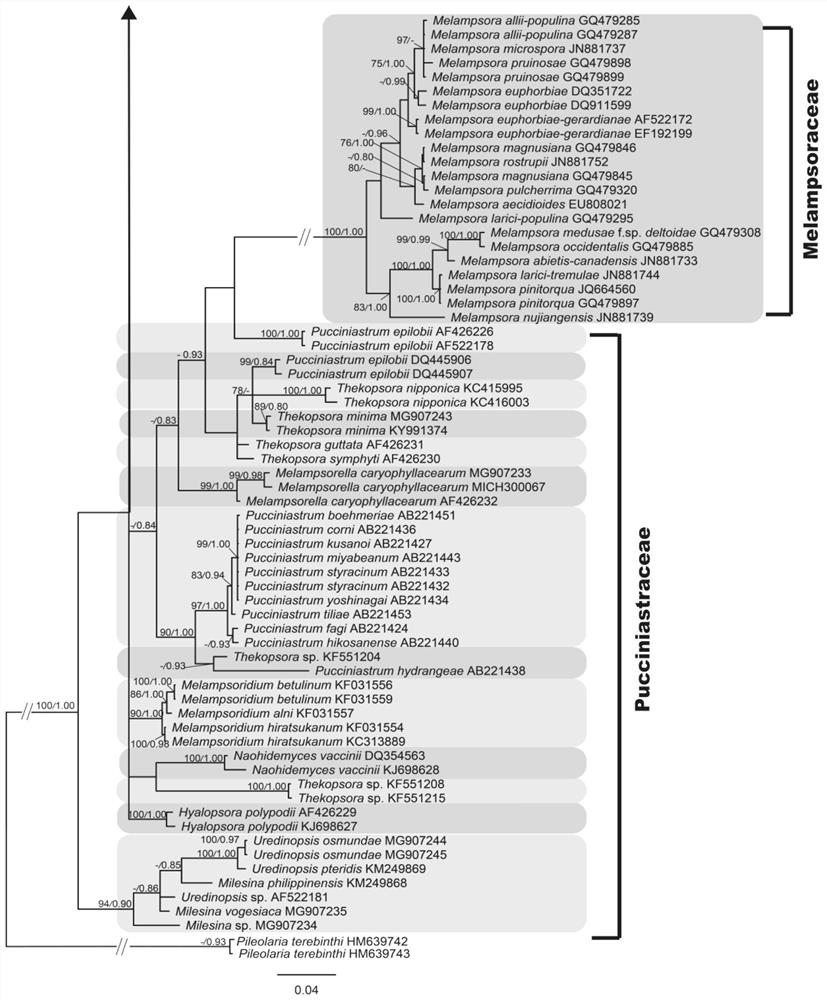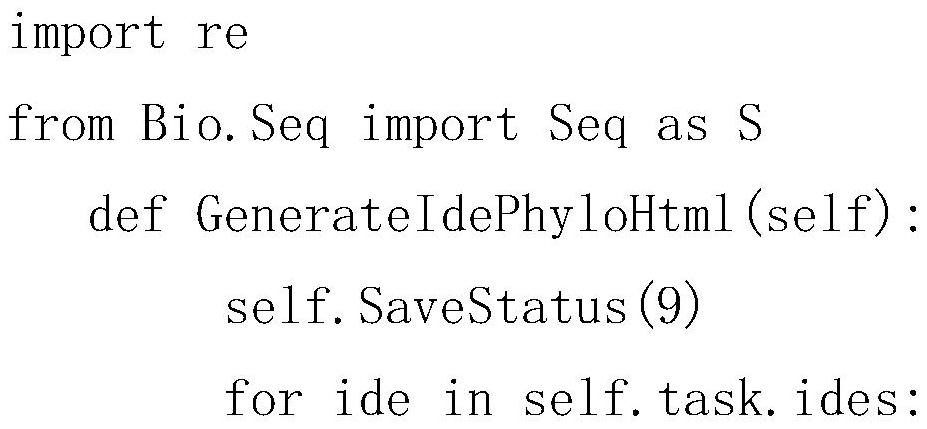Screening method for multigene pedigree of Cylindricaceae
A technology of columnar rusts and genes, applied in the field of multi-gene lineage screening of columnar rusts, can solve problems such as economic losses, threats, and ecological damage
- Summary
- Abstract
- Description
- Claims
- Application Information
AI Technical Summary
Problems solved by technology
Method used
Image
Examples
Embodiment 1
[0050] Embodiment 1, the construction and use method of multi-gene selection of Cylindromycetes and its typing screening database
[0051] 1. Multi-gene selection and typing screening database construction of Cylindromycetes
[0052] 1. Multi-gene selection of Cylindromycetes
[0053] Collect the following two gene sequences of the existing Cylindromycetes species: ITS and LSU;
[0054] The above-mentioned two gene sequences of the existing Pyropyridaceae species can be derived from the ITS and LSU gene sequences of all Pyropyridaceae species patterns and voucher patterns in the NCBI database; they can also be from the missing existing gene sequences in the collected NCBI database. ITS and LSU gene sequences in Cylindropyraceae species.
[0055] In the embodiment of the present invention, the ITS and LSU gene sequences of the existing Pyrocorticaceae species used are shown in Table 1 below.
[0056] 2. Build a database
[0057]Table 1 below shows all the ITS and LSU gene s...
Embodiment 2
[0089] Example 2, the application of the multigene reference sequence screening database of the Pillarphyllaceae species certificate specimens and bacterial strains in identifying whether the pathogen to be tested is Pyrophyllaceae
[0090] 1. Obtain the gene sequence of the bacteria ITS and LSU to be tested
[0091] Cronartium coleosporioides specimens MICH253346, C. comandrae specimens MICH253364, C. ribicola specimens NY267053 and Pine peony Specimen HMAS82784 of rust fungus (C.flaccidum) and specimen HMAS247968 of Larix poplar rust fungus Melampsora larici-populina in the family Psoriasiaceae were used as the pathogens to be tested.
[0092] The genomic DNA of 6 specimens to be tested in Cylindromycetaceae and 1 specimen in Pascariaceae were extracted respectively, and the primer pairs of these 3 genes (Table 2) were used to amplify these 2 genes respectively, and the amplified products were sequenced respectively , to obtain the three gene sequences of ITS and LSU of the...
PUM
 Login to View More
Login to View More Abstract
Description
Claims
Application Information
 Login to View More
Login to View More - R&D
- Intellectual Property
- Life Sciences
- Materials
- Tech Scout
- Unparalleled Data Quality
- Higher Quality Content
- 60% Fewer Hallucinations
Browse by: Latest US Patents, China's latest patents, Technical Efficacy Thesaurus, Application Domain, Technology Topic, Popular Technical Reports.
© 2025 PatSnap. All rights reserved.Legal|Privacy policy|Modern Slavery Act Transparency Statement|Sitemap|About US| Contact US: help@patsnap.com



